Like most people, you have probably been frustrated by a dead battery. However, you may be surprised to learn that overcharging your lead acid battery can be harmful. If you wonder whether it's possible to overcharge a lead acid battery, we researched the topic, so this is the post for you.
You should not overcharge a lead acid battery. When you overcharge it, you risk damaging it. Overcharging your battery might result in corrosion on the plate. Long periods of exposure to high temperatures might destroy your battery.
In this article, we will look at what happens if you overcharge your lead acid battery and other factors that can cause your battery to fail prematurely. In addition, you'll learn how to use a voltmeter and hydrometer to check the health of your lead acid battery. So read on!
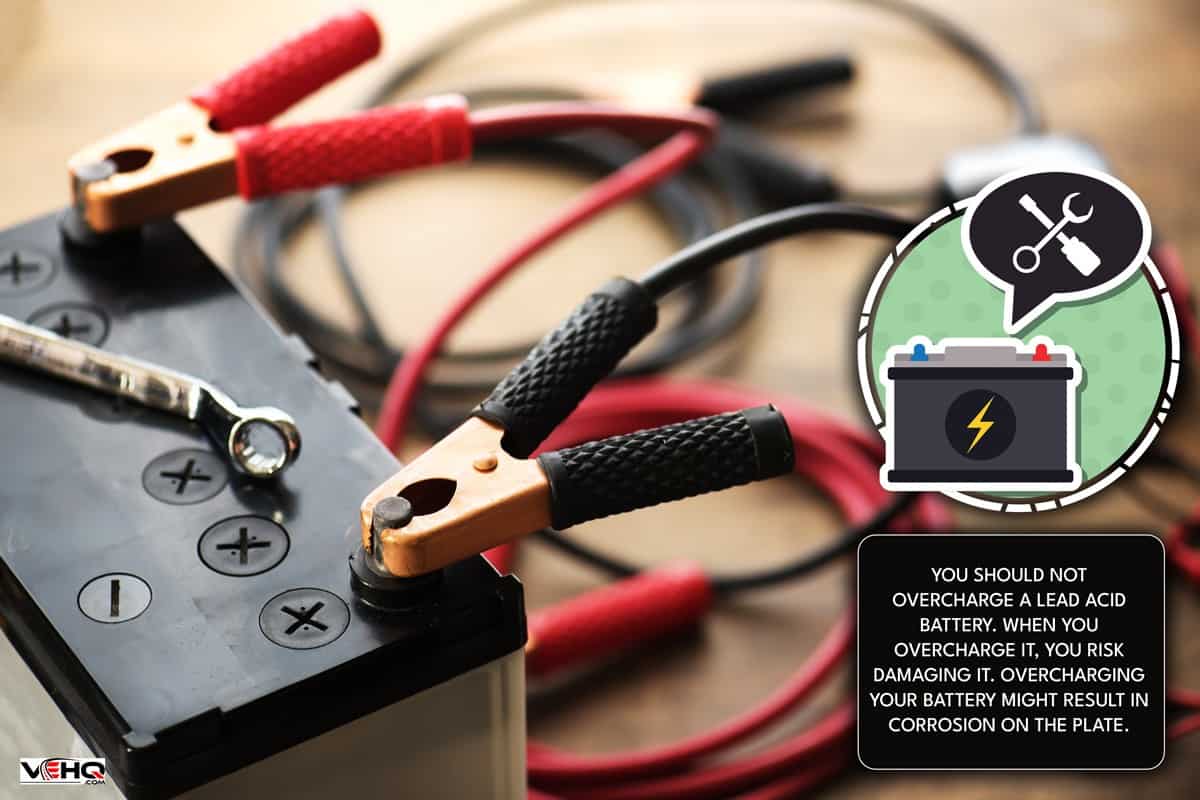
What Happens If You Overcharge Your Lead Acid Battery?
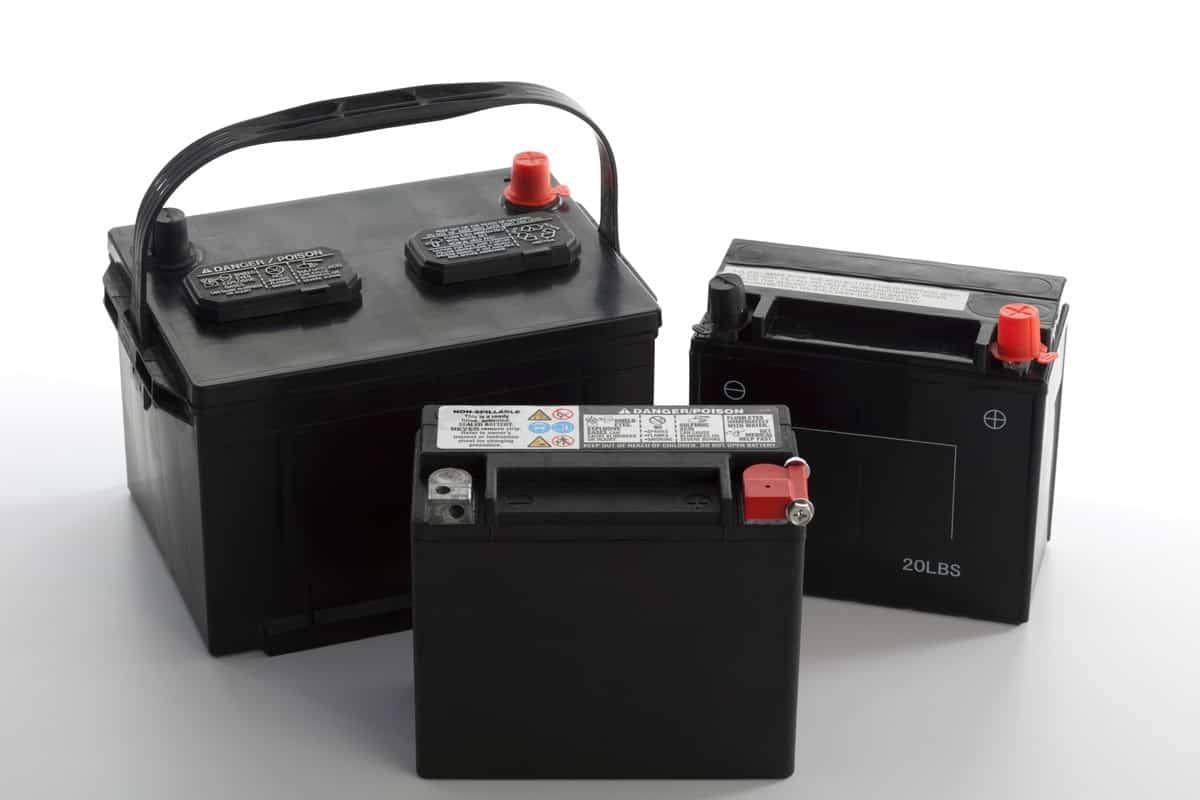
Overcharging a battery can result in various issues, including shortened lifespan, decreased capacity, and decreased efficiency. Corrosion of the positive battery plates can develop if you keep your battery in a continually charged state for an extended time.
Furthermore, it can cause the water in the electrolytes to break down into oxygen and hydrogen, resulting in the formation of combustible gases that must be released. The loss of hydrogen and oxygen alters the electrolyte's chemical makeup, making it too acidic.
If the battery overheats, the chemical process speeds up, causing the battery to overheat even more. Thermal runaway is a condition that may quickly kill a battery.
Most batteries have built-in protections to prevent this, but it can still happen if a battery is overcharged for too long or if the charger is not operating properly.
Thermal runaway damage can be fixed in rare situations. However, it is usually not covered under warranty. As a result, it is always better to be cautious and prevent overcharging your battery.
What Are The Other Reasons For Lead Acid Battery Failure?
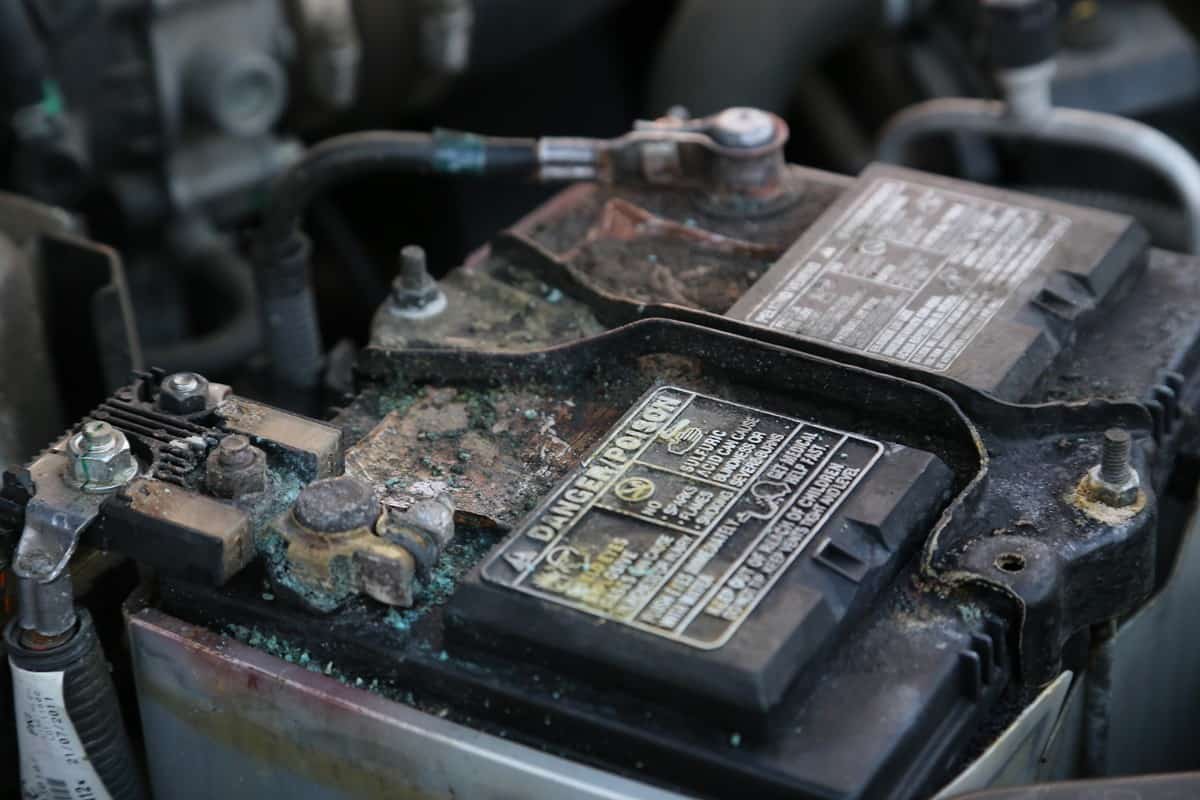
If you use your battery correctly, it will last longer. Simply knowing what you should and should not do with a battery can save you thousands of dollars.
The following are some of the other causes of premature battery failure:
Undercharge
Undercharging happens when the battery is not allowed to recharge to full capacity after usage. Plate sulfation occurs when a lead-acid battery is undercharged, and the sulfuric acid combines with the plates to generate lead sulfate crystals.
This lowers the battery's capacity to receive a full charge and worsens undercharging, potentially leading to premature battery failure.
Underwatering
One of the most common faults in battery usage is underwatering it. Damage can occur if the water lost during the charging process is not restored and the electrolyte levels go below the top of the plates.
An electrolyte solution of water and sulfuric acid is used to fill lead acid batteries. They create energy through a chemical reaction between lead plates and sulfuric acid.
This sort of battery must be refilled with water regularly. Otherwise, the chemical process will degenerate, and the battery will fail sooner.
Overwatering
Overwatering can also cause considerable harm to a lead acid battery. The electrolytes in a battery get diluted when it is over-watered.
The battery's performance will suffer as a result. Overwatering also increases the chance of leakage, resulting in a dangerous combination of sulfuric acid.
How Does A Lead Acid Battery Work?
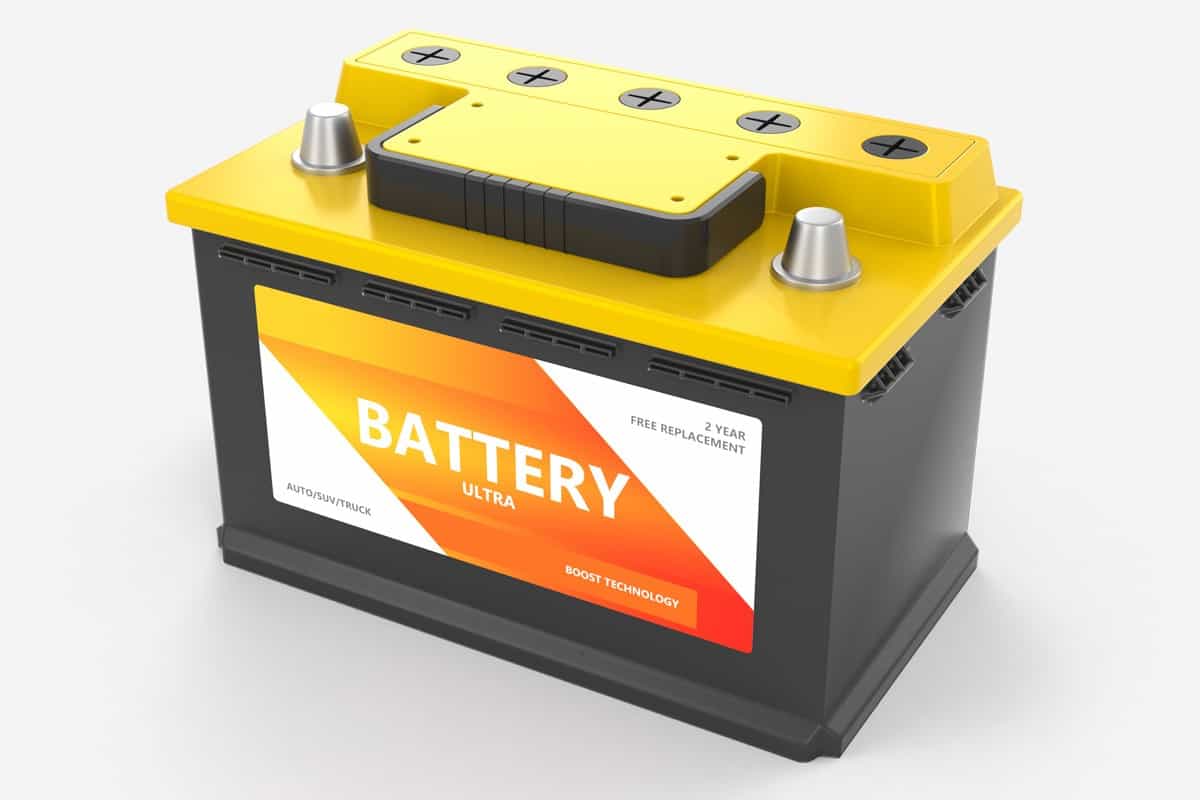
The electrical charge of a lead acid battery is formed when the sulfate in the sulphuric acid binds to the lead. The sulfate is returned to the sulfuric acid after receiving an electrical charge that charges the battery.
The acid contains several sulfate ions, and the surface area of the lead to which it binds is also limited. As the sulfate depletes, the lead acid battery's charge begins to weaken.
As a result, lead-acid batteries are unsuitable for powering devices for extended periods. Instead, they are best suited for applications that require a brief, intense burst of energy.
How To Check Your Lead Acid Battery With A Voltmeter
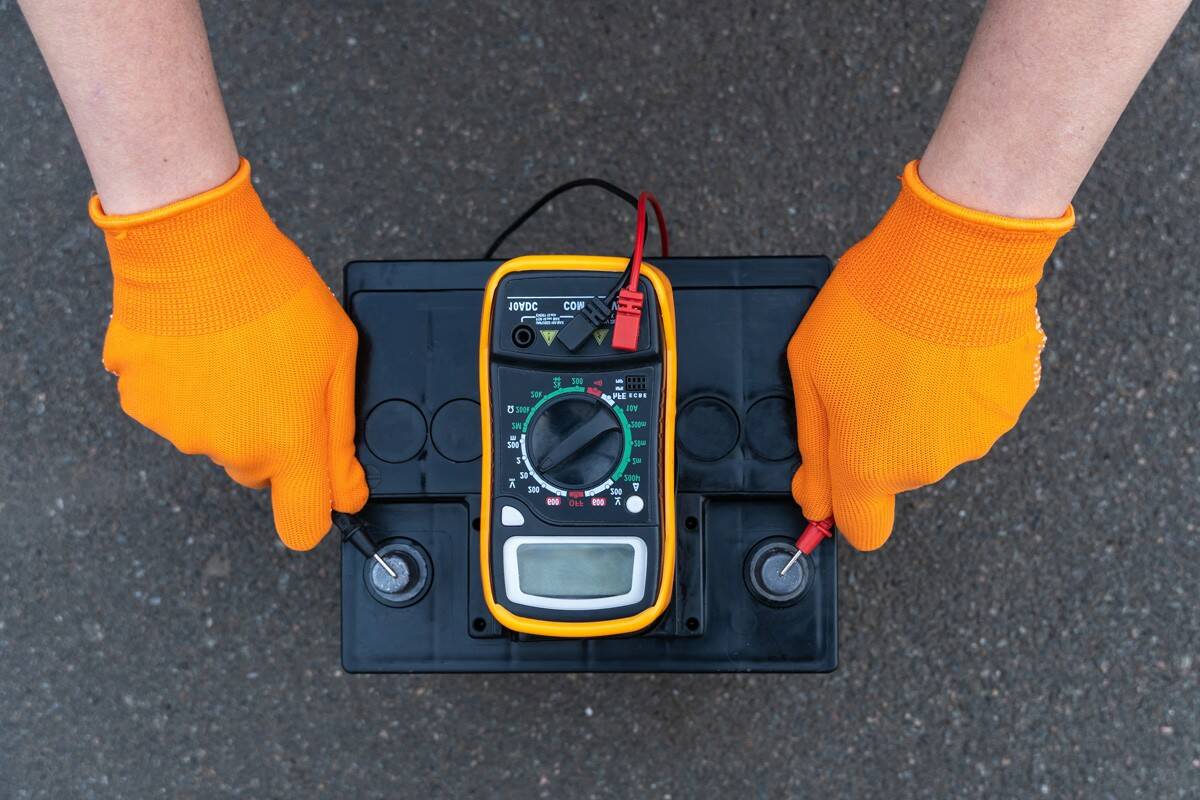
Fortunately, you can perform a basic health check by connecting your lead acid battery to a simple digital voltmeter. If you're using an open-cell battery, you can use a battery hydrometer to perform a more thorough examination.
1. Wear Thick Gloves and Turn On The Voltmeter
To be safe, put on thick gloves before doing this test. Press the power button on the digital voltmeter and wait for the display screen to read 0.0.
2. Connect The Voltmeter Leads To The Positive And Negative Battery Terminal
The digital voltmeter is equipped with two red and black probes. Connect the metal tips of the red probes or the positive probes to the battery's positive terminal.
Repeat the previous steps, but this time connect the black probes or the negative probes to the negative terminal of the lead acid battery. While doing so, keep the red probe on the battery's positive terminal.
You risk shorting out the battery and harming it if you attach the black probe first, and the red probe comes into contact with any conducting material.
3. Check The Voltmeter Reading
Under normal conditions, the reading for a 12-volt battery should be between 12.4 and 12.7 volts. If your car battery's voltage measurement is less than 12.4, it is not storing a charge effectively.
Other lead acid battery types have various ideal voltage values. For additional information, visit your battery's handbook or the manufacturer's website.
How To Check Your Lead Acid Battery With A Hydrometer
The steps for using your hydrometer are listed below.
1. Charge Your Battery
Charge your battery first, do a test run for a longer drive than 20 minutes, then turn off the engine for a few hours.
2. Use Protective Goggles and Thick Gloves
Protective equipment is essential because lead acid batteries contain toxic sulfuric acid. Put on thick gloves and goggles for protection. Put on a work apron and boots made of rubber or PVC.
3. Disconnect The Cables
Wearing your protective gear, use a ratchet set to disconnect the cable connecting the negative and positive terminals. Set the cable aside so that it will not come into contact with the battery.
It may cause harm to the product's electrical system or car since it still has some charge.
4. Remove The Caps Or The Lids Of The Battery
Check the sequence of caps on the top of the battery. Depending on the type of battery, there might be three or more caps. Therefore, consult the product handbook for confirmation.
Most battery lids or caps may be readily removed by unscrewing them with your hands. Set the caps aside to avoid losing them. Within the battery, each cap indicates a different liquid chamber or cell.
The overall voltage of the battery is obtained by connecting each cell in series.
5. Use The Hydrometer
Hold the hydrometer vertically at eye level and record the reading where the electrolyte meets the scale on the float. Take note of the specific gravity and temperature readings.
The battery-specific gravity table depends on a liquid temperature of 80°F. On the other hand, the liquid in your battery is unlikely to be at this ideal temperature.
To apply a general modification, add 0.040 to the specific gravity value for every 10°F above the ideal temperature and deduct the same amount for every 10°F below the ideal.
For example, if your SG was 1.270, and the temperature was 90°F, multiply by 0.004 to get 1.274 as the modified SG.
6. Collect Samples From The Remaining Cells
This isn't required, but checking each cell individually will give you an idea of your battery's overall health. Repeat the previous steps, but remember to change the specific gravity value according to the temperature.
All cell-specific gravity readings in a healthy battery should be within 0.050 (and ideally much closer) of each other.
For the 12V battery, here are a few guides;
- 12.56 to 12.73 SG = 85 to 100% charged
- 12.43 to 12.55 SG = 75 to 85% charged
- 12.10 to 12.42 SG = 50 to 75% charged
- 11.73 to 12.10 SG = 25 to 50% charged
- 12.00 & Below SG = fully discharged
7. Recap The Batteries And Clean The Hydrometer
After testing the battery, replace the lids on each cell compartment. If you're keeping the battery, replace or reconnect the wires to the terminals by connecting the positive followed by the negative.
To clean the hydrometer, soak it in distilled water and rinse it thoroughly.
That's A Wrap!
Overcharging your lead acid battery is not a good idea. Overcharging might shorten its life.
Check fluid levels before and after charging your lead acid battery to avoid overcharging or undercharging it.
While there are a few different factors that lead to short battery life, it's essential to read the instruction manual or speak with your battery provider to ensure you get the most out of your battery.
If you found this post helpful, check out these related articles:
Car Horn Not Working After Battery Change – What Could Be Wrong?
Can Your Radio Drain The Car Battery?
